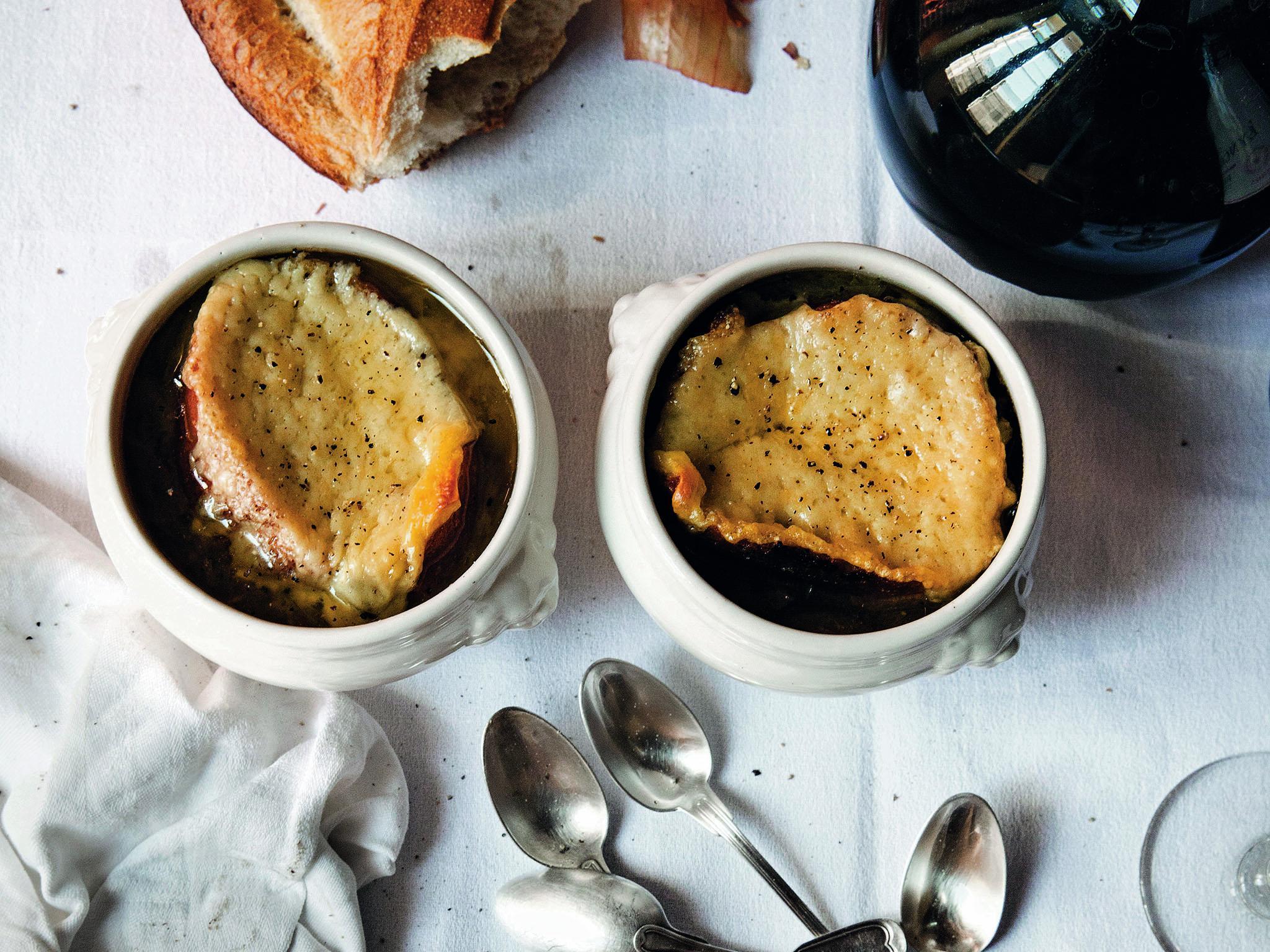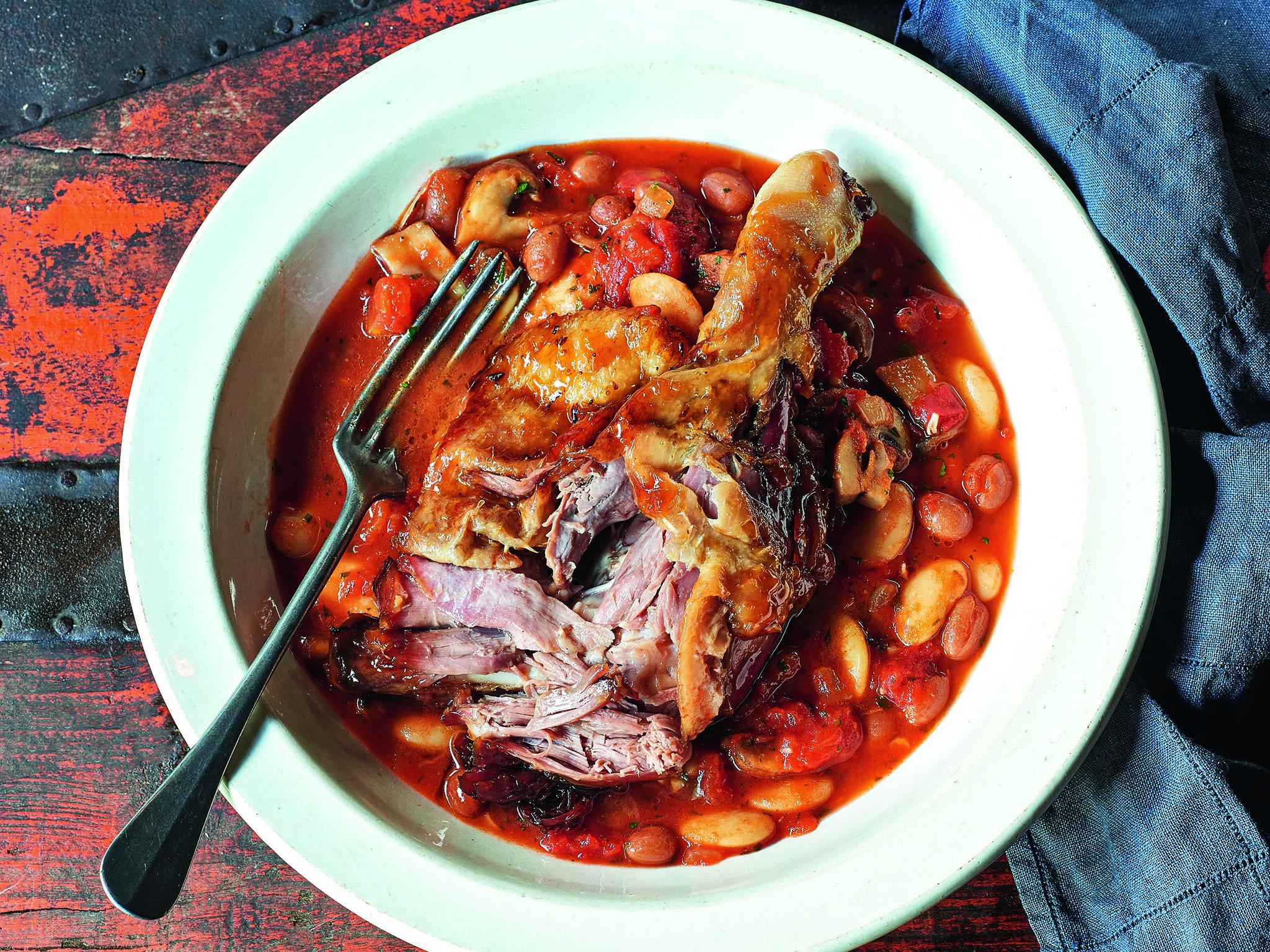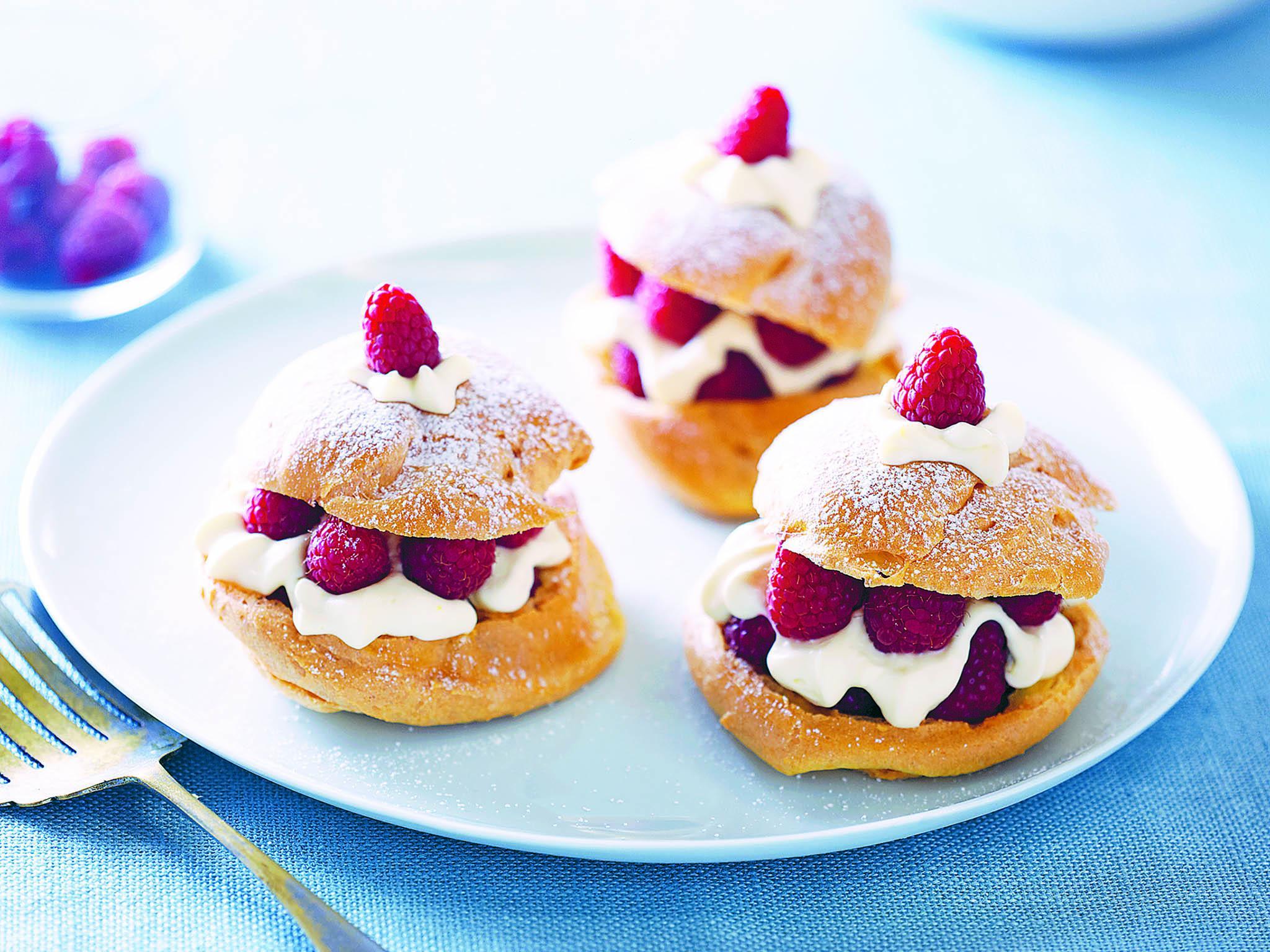Bastille Day 2018: Recipes from onion soup to raspberry choux puffs
It's celebrated on 14 July each year to mark the anniversary of the storming of the Bastille in 1789, so cook up a feast with these classic French recipes

Your support helps us to tell the story
From reproductive rights to climate change to Big Tech, The Independent is on the ground when the story is developing. Whether it's investigating the financials of Elon Musk's pro-Trump PAC or producing our latest documentary, 'The A Word', which shines a light on the American women fighting for reproductive rights, we know how important it is to parse out the facts from the messaging.
At such a critical moment in US history, we need reporters on the ground. Your donation allows us to keep sending journalists to speak to both sides of the story.
The Independent is trusted by Americans across the entire political spectrum. And unlike many other quality news outlets, we choose not to lock Americans out of our reporting and analysis with paywalls. We believe quality journalism should be available to everyone, paid for by those who can afford it.
Your support makes all the difference.Plantia’s onion soup
It’s hard to imagine a bigger French cliche than onion soup. It’s right up there with the moustache-sporting, striped-top-wearing, baguette-carrying guy pedalling his bicycle. When he sits down in a bistro to have onion soup, he’s probably whistling La Vie en Rose. And let’s not forget the beret! I actually quite like that guy – and I love onion soup. In fact, it has been a mystery to me that I didn’t include a recipe for it in A Kitchen in France, though now, like so many things in life, I know why. It made me so happy to discover, talking to the old-timers of St Yzans, that Plantia, the lady who ran the restaurant in our house years ago, cooked her onion soup just like I do. Monsieur Gilet told me that her secret was to include duck fat in the recipe. I have been doing that for years. He also told me that she wouldn’t use just any cheese for the tartines, instead opting for something special and flavourful, like comté or aged gruyère – just like I do. I call this Plantia’s soup, but it’s also my soup. It turns out they are the same wonderful cliche.
Serves 6
¼ cup/60g rendered duck fat, or butter
2lb/1kg large onions, thinly sliced
2qt/2l chicken stock
⅓ cup/80ml dry white wine
Leaves from a few sprigs of fresh thyme
Fine sea salt and freshly ground black pepper
6 thick slices rustic country bread
½lb/230g cheese, preferably comté, thinly sliced
1 tbsp sherry vinegar
In a large saucepan or flameproof casserole dish, heat the duck fat over a medium-low heat. Add the onions and cook, stirring frequently, until softened, about 15 minutes.
Preheat the oven to 400F/200C.
Add the chicken stock, wine and thyme, and season with salt and pepper. Bring to a simmer and continue to cook for 15 minutes. The soup should have a nice velvety consistency.
Put the bread on a baking sheet and top each slice with cheese. Toast in the oven until the cheese has melted and is slightly golden, a few minutes.
Add the sherry vinegar to the soup and adjust the seasoning with salt and pepper to taste. Ladle the soup into bowls, add a cheese tartine on top of each, and sprinkle with salt and pepper.
Extract from ‘French Country Cooking’ by Mimi Thorisson (Hardie Grant, £25) Photography © Oddur Thorisson

Confit duck with bean stew
Now common all over France, confit duck was originally a speciality of Gascony, where it has been made this way for centuries. Traditionally, the duck legs were cured in salt before being slowly cooked in their own fat. The great thing about duck confit is that you can use the fat for seriously good roast potatoes or combine it with some of the shredded meat to make rillettes (see page 30).
Serves 4
For the confit duck legs
4 duck legs
500g duck fat, at room temperature
2 bay leaves
Small bunch of thyme
For the bean stew
1 large onion, finely diced
4 garlic cloves, crushed
200g chestnut mushrooms, sliced
50ml olive oil
400g tin borlotti beans, drained and rinsed
400g tin butter beans, drained and rinsed
400g tin chopped tomatoes
25g tomato puree
Large bunch of flat-leaf parsley, leaves picked and chopped
Sea salt and freshly ground black pepper
Preheat the oven to 150C/300F/gas mark 2. For the confit duck, place the duck legs in a large ovenproof dish with a lid and cover with the duck fat. Add the bay leaves and thyme, cover and cook in the oven for 3 hours until the duck is very tender. For the bean stew, place a large non-stick frying pan over medium heat. Add the olive oil, onions, garlic and mushrooms and cook for 5 minutes until softened. Add the beans and tomatoes and stir in the tomato puree. Bring to the boil and cook over medium heat for another 5 minutes, then stir in the parsley.
Carefully remove the confit duck legs from the dish and drain on kitchen paper. Place a non-stick frying pan over high heat, add the duck legs and fry until browned and crispy. Season with salt and pepper and serve with the bean stew.
Extract from ‘James Martin’s French Adventure’ by James Martin (Quadrille, £20) Photography © Peter Cassidy

Raspberry choux puffs
Serves 10
I like to serve this popular dessert at the end of a Sunday family lunch. Plan ahead and cook the choux pastry and the crème pâtissière the day before you want to serve the dessert.
½ quantity choux pastry, made into 10 large choux puffs (see below)
Pulp of 2 passionfruit
1 quantity crème pâtissière (see below)
250ml (8½fl oz/1 cup) cream, whipped until firm
600g (1lb 5oz) raspberries
Icing (confectioners’) sugar, for dusting
Cut off the top of each choux puff to make a lid. Whisk the passionfruit pulp with the crème pâtissière, then fold into the whipped cream. Spoon into a piping bag. Place about eight raspberries in each choux puff. Pipe the custard over the raspberries, up to the rim of the choux puff, and top with more raspberries.
Replace the lid on each choux puff. Dust with icing sugar, garnish with a raspberry and serve immediately.
Choux pastry
Makes 30 small choux puffs, 10-12 large choux puffs or 10 Paris-Brest
This is the very first pastry I learned to make as a 16-year-old apprentice chef. It’s so much fun to make and doesn’t take long to prepare. However, it requires some concentration in the mixing of the ingredients. You can use this mixture to make choux puffs or Paris-Brest.
60g (2oz) unsalted butter
¼ tsp salt
125g (4oz) plain (all-purpose) flour, sifted
4 large eggs
1 egg yolk mixed with
1 tbsp cold water, for glazing
Preheat the oven to 205C (405F). Line a baking tray with baking paper. Combine 250ml (8½fl oz/1 cup) water, the butter and salt in a saucepan. Bring to the boil, reduce the heat and add the flour, stirring vigorously with a wooden spoon until it forms a smooth sticky mass. Remove from the heat and set aside to cool for 3-4 minutes.
Mix in the eggs one at a time, stirring with a wooden spoon. Spoon the mixture into a piping bag fitted with a 1cm (½in) plain nozzle.
To make small choux puffs, pipe small mounds of pastry 2cm (¾in) in diameter and 2cm (¾in) apart on the prepared tray. To make large choux puffs, pipe mounds of pastry 6cm (2½in) in diameter and 2cm (¾in) apart on the prepared tray. To make Paris-Brest, pipe a ring 1cm (½in) thick and 5cm (2in) in diameter onto the tray. Gently and lightly tap the top of each choux puff or Paris-Brest with a fork dipped in the egg yolk and water mixture.
Bake for 20 minutes, then reduce the temperature to 150C (300F) and cook for a further 20 minutes. Turn off the oven and leave the choux pastry to dry in the oven for about 1 hour. Cool on a wire rack before storing for up to 3 days.
Crème pâtissière
Makes 625ml (21fl oz/2½ cups)
This pastry custard is used in tarts, is delicious with fruit and is often used to make souffles. You can make it lighter by adding a little whipped cream to the cold custard.
500ml (17fl oz/2 cups) milk
½ vanilla pod, split lengthwise
4 egg yolks
100g (3½oz) caster (superfine) sugar
50g (2oz/⅓cup) plain (all-purpose) flour, sifted
Combine the milk and vanilla pod in a saucepan and bring to the boil. Remove from the heat and whisk well so the vanilla seeds flavour the milk.
Whisk the egg yolks and sugar in a heatproof bowl for 2 minutes. Whisk in the sifted flour. Remove the vanilla pod from the milk. Pour the hot milk onto the egg-yolk mixture, whisking well. Return the mixture to the saucepan and bring to the boil over medium heat, whisking constantly. When the mixture is just boiling and has thickened, transfer to a heatproof bowl. Whisk for a few seconds more, then set aside to cool before storing in the refrigerator for up to four days.
Extracted from ‘So French So Sweet’ by Gabriel Gaté (Hardie Grant, £12.99) Photography © Mark Roper
Join our commenting forum
Join thought-provoking conversations, follow other Independent readers and see their replies
Comments